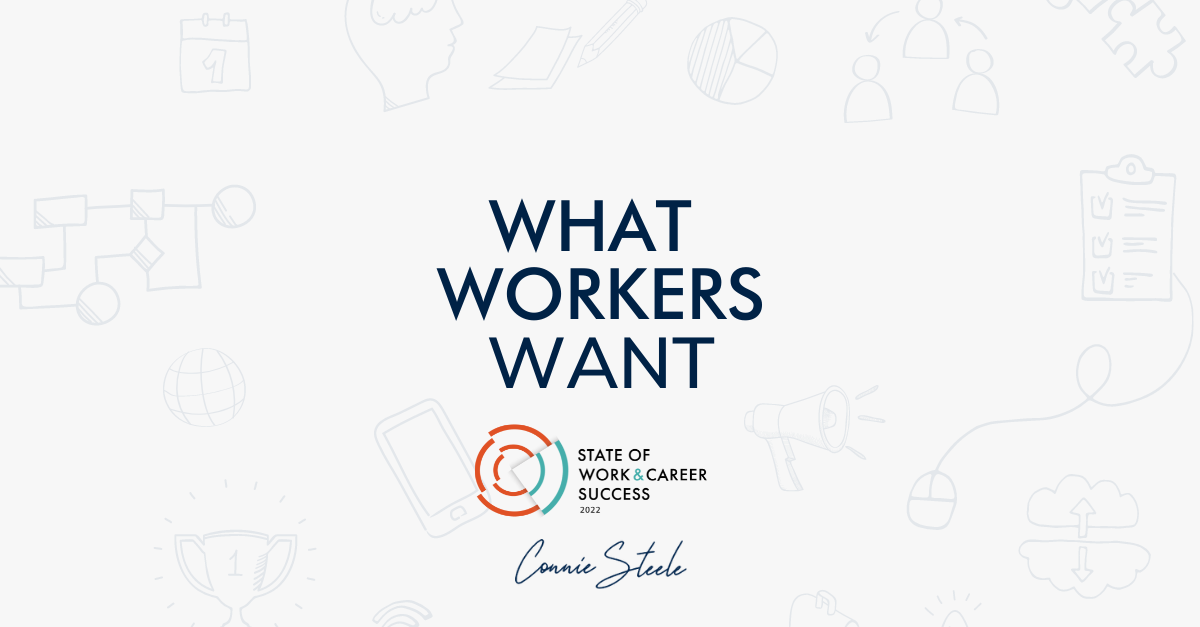Purpose, Passion, & Pay: The Changing Priorities of the Workforce
The nature and makeup of the workforce is changing — and the needs, attitudes, and behaviors of workers are changing with it.
The MBO Partners 2021 State of Independence report shows that 2021 was the first year that Millennials and Gen-Z made up the majority of the independent workforce, 34% and 17% respectively. These two generations also currently make up over half the population in the U.S.
So, what are the priorities of this changing workforce? According to the State of Work and Career Success 2022, which I published March 24, a steady income is still the top priority (39%), followed by doing work that is meaningful (28%) and being in a field where they can channel their passion (25%).
However, Gina Woodall, President of Rockbridge Associates, who I partnered with for this research, offered an important caveat to this point in the most recent episode of Strategic Momentum:
“But when we actually are able to link it to the impact on career success or satisfaction with their career, earning a steady income goes down and what's really driving them at the highest level are things where you get into this idea of passion, right?
That they’re doing work that is meaningful to them, that they're in a field that they're passionate about, that the work is interesting: those are the career goals that are really impacting how they feel about themselves in terms of the satisfaction with their careers.”
And as I wrote last week, this matters for organizations because those that feel unsuccessful are much more likely to feel unengaged or leave their current job.
Millennials and Gen-Z also prioritize their time and wellbeing more than other generations, especially after the pandemic. And these changes are likely only going to get more dramatic as the demographic shift in the workforce continues. In Microsoft’s 2022 Work Trend Index, which surveyed more than 31,000 full-time or self-employed workers across 31 markets, they go as far as saying “flexibility and wellbeing are non-negotiables that companies can’t afford to ignore.”
This is part of what Microsoft calls the new ‘worth it’ equation, and it reflects what we found in the State of Work and Career Success 2022. They reported that, beyond pay, the five things that employees view as “very important” are positive culture, mental health / wellbeing benefits, a sense of purpose/meaning, flexible work hours, and more than the standard two weeks of paid vacation time each year.
Slack’s 2022 Future Forum Pulse supports this as well. They wrote that over three-fourths of the full-time knowledge workers surveyed say they want location flexibility and a whopping 95% want schedule flexibility. And this matters because they also found that “72% of workers who are dissatisfied with their current level of flexibility at work say they are likely to look for a new job in the next year, compared with 58% of total respondents (up from 57% last quarter).”
We’ve focused a lot on the younger generations so far, but there’s something from the State of Work and Career Success I wanted to highlight here: those in their 50s were the most likely age group to identify meaning as one of their top three career goals. However, they are less likely to report being successful in doing so, which again means they’re less likely to be engaged or stay.
Finding People-Company Fit
Companies are often looking for the one-size-fits-all solution. But that just isn’t going to exist here. However, many companies are already used to this kind of problem solving — they’re just not leveraging those strategies in all the right places.
When an organization is looking for product-market fit, they seek to align the wants and needs of their target audience to the solutions the organization can deliver to satisfy them. Well, your people are your target audience here. Don’t make this seem more difficult than it already is by completely re-inventing the wheel.
People-company fit might take a little more curation to the individual than product-market fit, but it still comes down to the same fundamentals: testing, learning, and iterating.
But there’s simply no getting around it — your peoples’ new priorities have to be your organization’s new priorities if you want to keep talented, engaged workers of any age.

